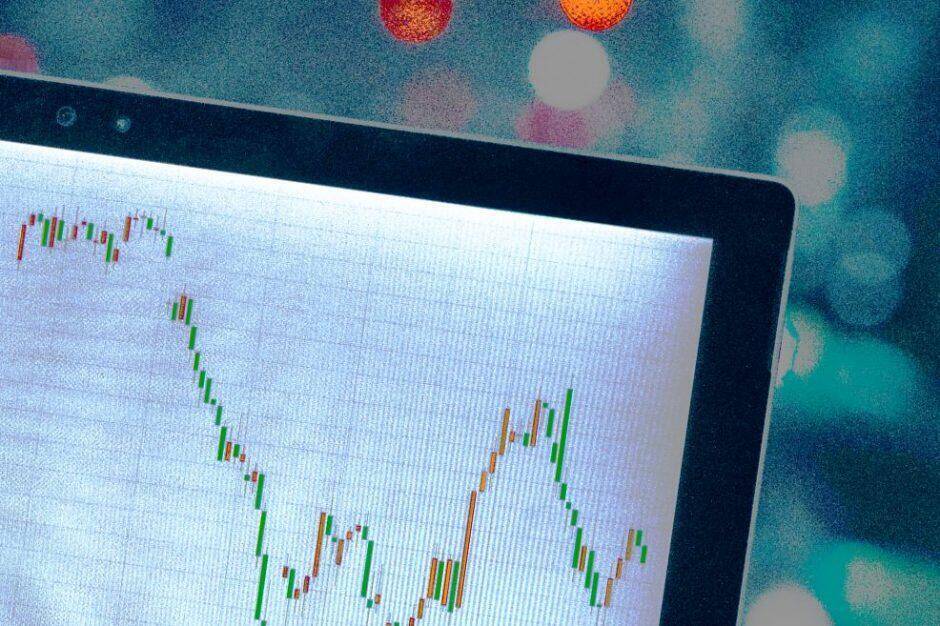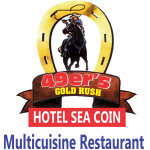Easy Support Resistance Calculation with Agglomerative Clustering Python Tutorial by B O Trading Blog

However, stock market volatility activity was low as US inflation fi… Traders remember previous highs at which the market has fallen and will look to sell again should the market return to previous highs. Round figures can act as support as traders look to buy around these numbers.
- This article undertakes such an analysis, using support and resistance levels provided to customers by six firms active in the foreign exchange market.
- I’m using exponential moving averages, but that’s not obligatory.
- Mark major support and resistance levels on your chart, as they could become relevant again if the price approaches those areas.
- For example, in the chart below, we see that the Apple stock has formed a strong support at $116 and a resistance at $135.
- Not the one, who is a “market maker” and thought to cause other traders’ losses without losing himself/herself.
As the price climbs towards the resistance, it is thought that sellers become more inclined to sell and buyers become less inclined to buy. 3) Fibonacci S&R – The Fibonacci tool is often used to identify price reversals during market corrections. In other words, Fibonacci levels could act as support and resistance for the price, as shown on the following chart. Support and resistance analysis is the clearest way to read the market.
Other Major Support and Resistance Levels
An attempt to cross the key level failed, and the correction will likely continue. We have already determined the nearest support zone using local extremums and Fibo ratios. Once that zone is broken, the next support level will be at 0.618 Fibo. On the other hand, the ATH was updated a year ago, so there’s a bigger chance that the price will go further upwards. Based on that logic, we can say that the pace at which the trading range between the new resistance and support and the previous extremums increases is a leading potential reversal signal.
- Additionally, traders may use support and resistance zones instead of levels.
- Moreover, out of all the price-based technical analysis methods, the principle of support and resistance is among the most essential and popular techniques.
- They provide traders with a view of how the market is currently moving and what it could do in the future.
- These include the use of the most recent lows as an example and Fibonacci’s.
- These levels remain in place regardless of where the stock is trading.
- Traders with the most accurate support and resistance levels are best equipped to take action for minimize losses and maximize profits.
In figure 5, we can see a weekly chart of USDCHF with three different exponential moving averages plotted on the chart – the EMA 13, 50, and 100. As you can see, the EMA 13 provided short-term resistance during a sustained downtrend. However, even though the EMA 50 and 100 were trailing the price way above the downtrend, once the price retraced up, the EMA 100 acted as a resistance. Soon, the downturn found support near the EMA 50, creating a momentary price channel. Hence, using a confluence of technical indicators to confirm the end of the retracement is vital when you are using these levels to anticipate support and resistance levels. While retracement levels can help you enter the market, Fibonacci extension levels can help you identify potential profit targets.
Using key levels in stock trading can improve your trading quality and make your trading safer. To allow for the market’s development direction in our trading plan, we will draw one more local trend line through the subsequent troughs – ray 4 on the chart above. It crosses the red zone mentioned earlier and supports buyers.
Psychological Price Points
On the other hand, when the price action remains or crosses above the pivot, it shows that the market is bullish. Traders would be looking at the third major resistance level as an exit price in the event of an event-driven breakout. It is simply that many market participants are acting off the same information and placing trades at similar levels. If the market is uptrending, you use Fibonacci numbers from bottom to top. At this level the supply is strong enough to stop the price from rising further.

If you can learn to successfully identify major support and resistance levels and plan your trades around these levels, it will help you dramatically improve your reward to risk ratio, as well as win rate. In figure 2, we have used a built-in pivot point indicator to draw the S1-S3, R1-R3, and Pivot Point on a EURUSD chart. While these pivot points are based on the previous day’s high, low, and closing prices, these are only relevant for today’s market. Zooming into the 60-minute chart, we can see the EURUSD turned bearish early in the day but soon found support.
Trading Ranges
A support level is defined as the price action of the buying interest in an uptrend when the asset price rises in value or the selling interest in a downtrend when the asset price falls. That’s the price that makes technical analysts actively support further trend development. Conversely, resistance is defined as the price level which makes market participants fix profits and go in the opposite direction of the trend line, i.e., resist further price moves in the same direction. However, support or resistance levels aren’t registered solely in a trending stock market. Those key price levels can be observed in a flat market as well.
How do you calculate support and resistance level?
- First resistance (R1) = (2 x PP) – Low. First support (S1) = (2 x PP) – High.
- Second resistance (R2) = PP + (High – Low) Second support (S2) = PP – (High – Low)
- Third resistance (R3) = High + 2(PP – Low) Third support (S3) = Low – 2(High – PP)
Another common strategy used by traders is price action, which involves exactly to this, look at charts and identify patterns. Among day traders, short-term period moving averages like the EMA 5 and 13 are very popular as both of these are from the Fibonacci sequence of numbers. If you are a swing trader, sticking to EMA 50, 100, and 200 would likely be more appropriate as traders use these longer-term moving averages to identify momentum over days and weeks. Besides horizontal support and resistance levels, there are a few additional types which any trader should know about.
Explore the markets with our free course
So, we have already got our profit fixing target to go short at a breakout. There are also price levels that are not specifically anchored by chart indicators but are more based on simplistic psychological areas or based on calculating support and resistance levels underlying derivative based mechanics. Once the initial support and resistance are calculated, then there are four additional levels to be extrapolated to cover the potential full range of movement for the underlying stock.
Pound Sterling remains above 1.2600 after Federal Reserve banking report – FXStreet
Pound Sterling remains above 1.2600 after Federal Reserve banking report.
Posted: Mon, 08 May 2023 19:43:27 GMT [source]
This article undertakes such an analysis, using support and resistance levels provided to customers by six firms active in the foreign exchange market. The author offers strong evidence that the levels help to predict intraday trend interruptions. However, the levels’ predictive power is found to vary across the exchange rates and firms examined.
An uptrend line is a straight line made by connecting recent lows. Similar to the moving average, an upward-sloping line will act as support. Resistance is a price level above the current price where the market expects prices to fall if touched. Support is a price level below the current price where the market expects prices to rise if touched. The below chart shows flight to safety in response to the new Omicron COVID-19 strain.
I may spot an S/R level on an hourly chart, but it could be too small to see on a daily chart. Usually, higher time frame levels are stronger than lower time frame levels. If buying near support, wait for a consolidation in the support area, and then buy when the price breaks above the high of that small consolidation area. When the price makes a move like that, it lets us know the price is still respecting the support area and also that the price is starting to move higher off of support. Wait for a consolidation near the resistance area, and then enter a short trade when the price drops below the low of the small consolidation. In an uptrend, the price makes higher highs and higher lows.
If the price moves in the right direction (respects prior support or resistance levels), however, the move may be substantial. When entering a trade, have a target price in mind for a profitable exit. If buying near support, consider exiting just before the price reaches a strong resistance level. If shorting at resistance, exit just before the price reaches strong support.
Reactions can occur for a large variety of reasons, including profit taking or near-term uncertainty for a particular issue or sector. The resulting price action undergoes a “plateau” effect, or a slight drop-off in stock price, creating a short-term top. Let’s imagine that Jim notices that the price fails to get above $39 several times over several months, even though it has gotten very close to moving above that level. In this case, traders would call the price level near $39 a level of resistance. As you can see from the chart below, resistance levels are also regarded as a ceiling because these price levels represent areas where a rally runs out of gas. You can use support levels to identify potential entry points for buying an asset.
What is the best indicator for support and resistance?
- Fibonacci Support and Resistance Indicator. The first support and resistance indicator on our list is the Fibonacci.
- Wolfe Waves. The second support and resistance indicator on our list is Wolfe Waves.
- Camarilla Pivots.
- Murrey Math Lines (MML)
- Admiral Pivot.
The 3rd major resistance level is generally only broken through as a result a major economic or financial event. These include earnings, central bank and government policy, and other global events. Traders would be looking at the second major resistance level as an entry price in the event of an extended rally. Traders would be looking at the first major support level as an entry price. In any event, support is an area on a price chart that shows buyers’ willingness to buy. It is at this level that demand will usually overwhelm supply, causing the price decline to halt and reverse.
The pivot point indicator is an easy to use tool that’s been incorporated in most trading platforms. The platforms automatically calculate support and resistance levels, so the trader doesn’t have to do it manually. After getting the pivot levels, the trader can concentrate on figuring out their approach to the market for the day.
Think about trends which are a series of rising support levels or lowering resistance levels. Or chart patterns formed through a series of support and resistance levels. Or Fibonacci, which means identifying the correct support and resistance levels to use as starting points. Binary options trade based on an underlying market, so binary traders will chart the underlying market. For example, if you’re trading binary options on gold prices, then you would find support and resistance levels on the spot price of gold to determine your binary trading strategy. Support and resistance levels are important for all traders, regardless of their timelines.
Technical traders and other market participants will therefore likely look at these price-levels as zones at which increased demand for the instrument could form again. A simple horizontal support level is shown on the following chart, marked by the red line. Support and resistance (“S/R”) is part of the foundation of technical analysis.
Such a dynamic level will be significant, but not as much so as a trend line starting from the price movement initial point. In our case, that dynamic level isn’t significant as it’s located below the main trend line. At the same time, trend line 2 is too far from the current market price levels https://traderoom.info/ and will be relevant only to long-term planning if the market faces a huge panic or starts correcting for a few years. Add onto the chart three moving averages calculated when the candlestick’s price closes. Choose a period for each EMA so that they cross as many chart extremums as possible.
When it turned bullish in the evening, the R1 and R2 levels provided momentary resistance to the bullish momentum. It helps to isolate a longer-term trend, even when trading a range or chart pattern. For example, if the trend is down but then a range develops, preference should be given to short-selling at range resistance instead of buying at range support. The downtrend lets us know that going short has a better probability of producing a profit than buying. If the trend is up, and then a triangle pattern develops, favor buying near support of the triangle pattern. For example, if the price is trending lower, it will make a low, then bounce, and then start to drop again.
In this case, notice how the trendline propped up the price of Newmont’s shares for an extended period of time. Although technical analysis involves all sorts of indicators, it’s primarily observing price movement to establish trends and make wise investment decisions. Moreover, out of all the price-based technical analysis methods, the principle of support and resistance is among the most essential and popular techniques. It can help you gain more insights into the strength of a price trend. Traditionally, the popular moving averages are 20 and 50 period MAs, though they can be slightly altered to 21 and 55 respectively (to make use of Fibonacci numbers). Another strategy is to use support and resistance levels as a way of putting a stop loss and a take profit.
How do you find support and resistance levels in Excel?
- S1= Support 1.
- S2 = Support 2.
- R1 = Resistance 1.
- R2 = Resistance 2.
